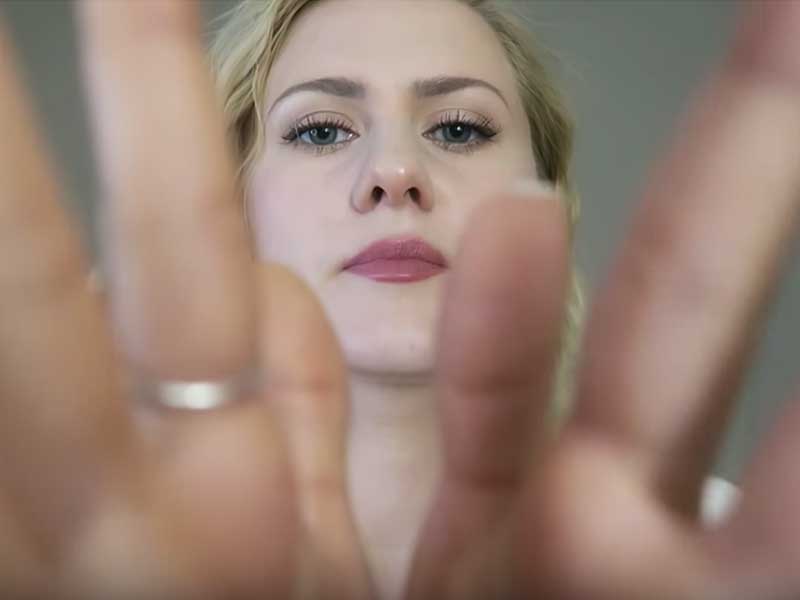
By now you’ve heard of Autonomous Sensory Meridian Response, more popularly referred to as ASMR.
A physical sensation response to audio, visual, and tactile stimuli described as a static-like or tingling feeling that typically begins on the scalp and moves down the back of the neck and upper spine, ASMR was, until recently, the sort of topic relegated to Reddit threads and other online communities. But over the last six or seven years, this tingle-seeking group has starting moving aboveground to enjoy its day in the sun. This is thanks in large part to the fact that the sensation itself was formally given a name in 2010, reportedly by a cybersecurity expert named Jennifer Allen, as well as to the increasing popularity of ASMR YouTube videos.
These videos, made by “ASMRtists” use sound triggers such as whispering, crinkling paper, brushes on paper, slurping, and wet slapping mouth sounds with heavy emphasis on enunciating and amplifying consonants to induce ASMR. And they get millions of views. ASMR has also been used in movies and television commercials, such as this Chinese Dove Chocolate ad, and IKEA ad.
How many people experience ASMR and what causes it?
Not everyone experiences a positive sensation when hearing these sounds. The lip smacking and other mouth sounds in many of the insanely popular videos are off-putting, or even downright gross, to some. But those who do experience ASMR, from these sounds or other triggers, report feeling calmed, soothed, relaxed, and sleepy; with a smaller segment reporting that it feels like an brain “orgasm.”
Craig Richard PhD, a professor at Shenandoah University in Winchester, Virginia, and founder of the ASMR University website tells me over email that, while there are to his knowledge no current numbers on what percent of the population experiences an ASMR response, his best guess is that 40% may experience some level of response with 20% experiencing a strong response.
While the biological mechanism isn’t known, a 2016 fMRI study found a difference between the brains of those who do and do not experience ASMR. And, according to Richard, that’s pretty much where things stand at the moment.
Why spas should be considering adding ASMR experiences to their menus
Regardless, with this potentially sizeable community now getting some attention, and given the description of the experienced responses – relaxing, sleep inducing, etc. – it’s no surprise that spas have taken notice. Spa Business tagged ASMR as a trend to 2017-2018 in its most recent handbook, noting the opening of Whisperlodge, an ASMR “spa” where “therapists blindfold guests and whisper in their ears, touch them gently with makeup brushes, crinkle tissue paper near their heads or even draw with charcoal alongside them.”
This text is a tad misleading in that Whisperlodge is not a spa but an artist-run pop-up performance space with no fixed location that has offered ASMR “spa” like experiences over a few days in New York and the Bay Area. And, while it makes perfect sense that spas would look at incorporating ASMR into their experiences, not many appear to have actually done so. Toronto’s The Spa Club offers ASMR treatments, and the ASMR group on Reddit says Lush Spa manages to induce tingling with some of their treatments, either inadvertently or on purpose.
But there is potentially a larger untapped market to be found here, as the videos might not be delivering the full experience for all.
Much of the appeal of the ASMR videos on YouTube seems to be the illusion of personal attention. See, for example, “Gentle Whispering,” a young woman named Maria who whispers in an Eastern European accent about “caring for you” and “pampering you”, while reaching for the camera and stroking at the lens, as though caressing your face.
Her YouTube profile says, “I’m here to comfort you, to share my love and care with you.” She wants to “be your friend,” and to “help you find beauty and peace.”
Touch: the missing element
Richard says, “I think ASMR will work wonderfully in spas, and may even work best in spas. A problem with ASMR videos is the absence of touch which can be incorporated into an in-person ASMR spa session. Our research shows that touch may be the strongest ASMR trigger, so many people may prefer a spa ASMR session over a video ASMR session.”
He also says, “I strongly believe that ASMR may be associated with social and bonding connections between people. ASMR and bonding behaviors share similar triggers like gentle touches and soft voices between individuals that trust each other, and also have similar responses like feeling comforted, feeling relaxed, and feeling secure.”
If nothing else, this all might be just another an indicator that there are a lot of people out there in need of personal attention, something at which the best spas excel.
If you’re interested in learning more about ASMR, ASMR University is a pretty vast resource. Start here.
Richard is also conducting an ASMR-related survey here.
Spa Executive magazine is published by Book4Time, the world’s most innovative spa, salon, wellness, and activity management software. Learn more at Book4Time.com



